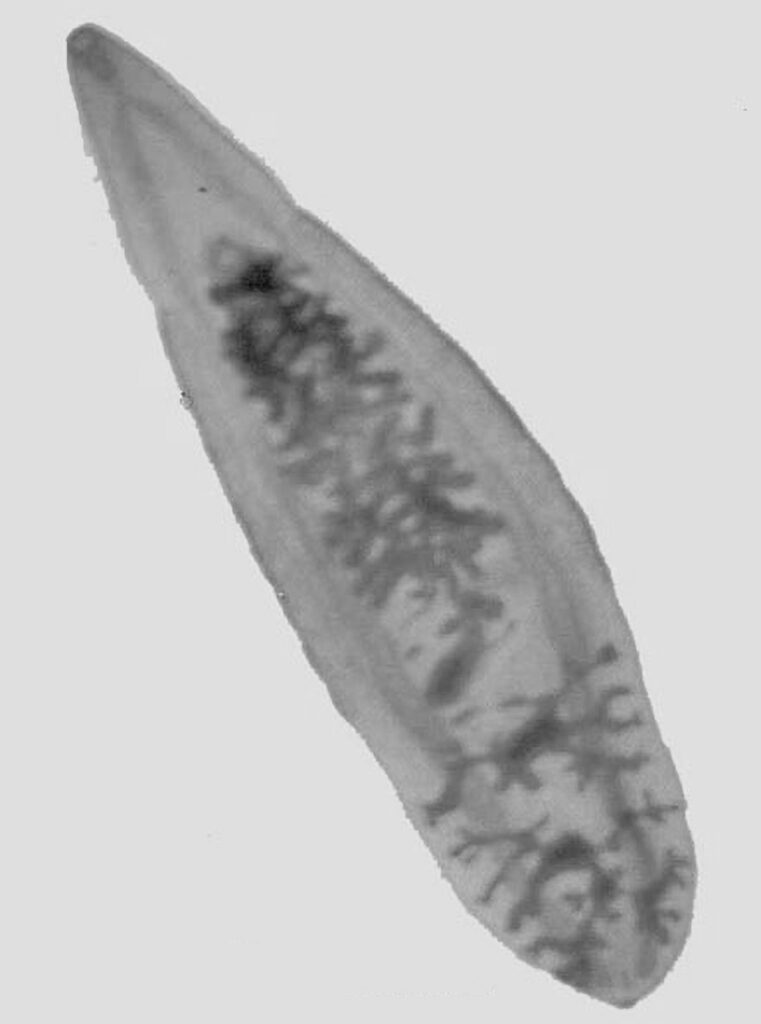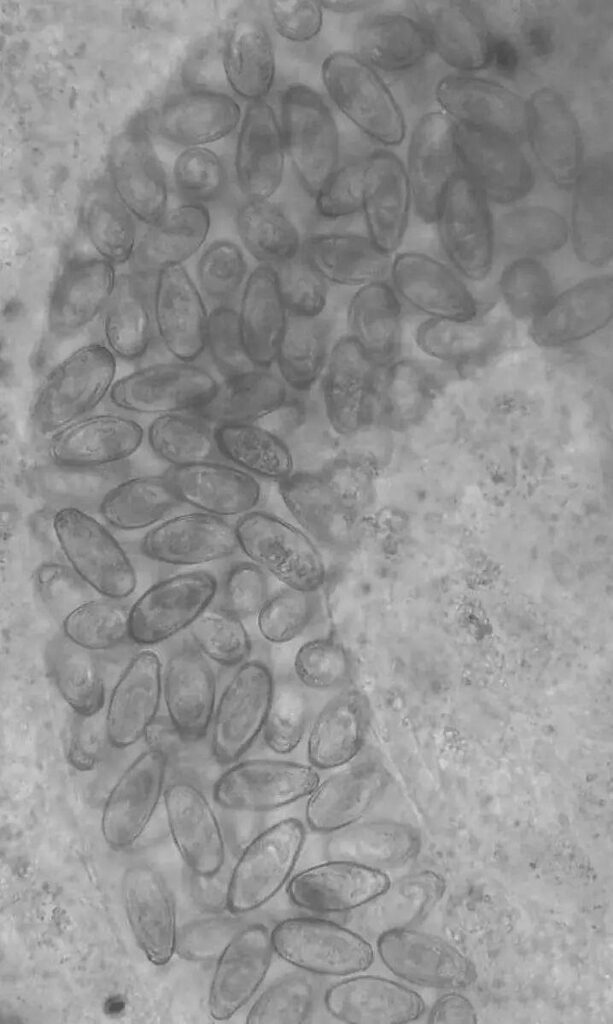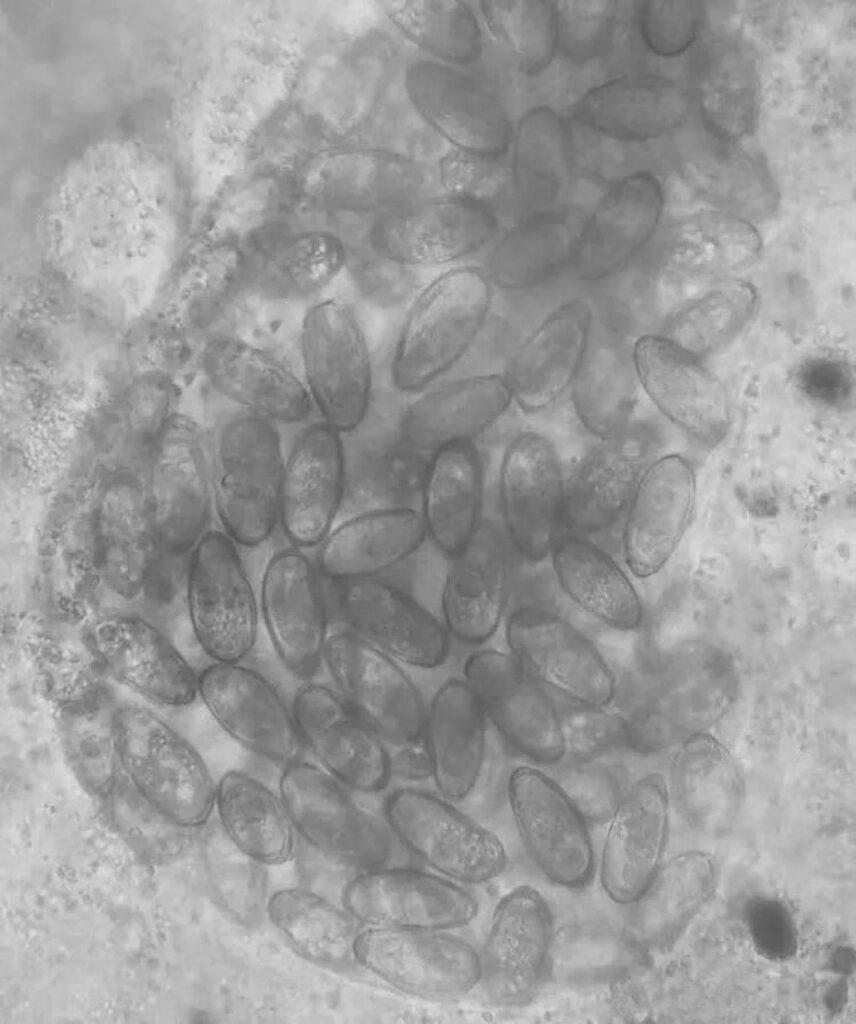A Chinese man who ate a delicacy of undercooked fish has lost half a liver after the vital organ was “eaten” from the inside by an army of parasitic flatworms which laid “countless” eggs.
The patient, named only as Mr Xie, 55, presented with symptoms including a loss of appetite, fatigue, abdominal pain and diarrhoea lasting four months, according to a report by Hangzhou First People’s Hospital on 17th July. (https://bit.ly/3eNJ6iy)
He was later diagnosed with clonorchiasis – an infection disease caused by the parasitic flatworm known as the Chinese liver fluke (Clonorchis sinensis).
The native of Sichuan had returned to Hangzhou, capital of Zhejiang Province in East China, in January, but he did not seek medical attention until he developed three days of chills and a high fever recently, the report said.
Mr Xie’s hospital scans left doctors “shocked” when they showed the left lobe of his liver having been “emptied” and replaced by a pus-filled sac measuring 19 by 18 by 12 centimetres (7.4 by 7 by 4.7 inches).

CT scans also detected the presence of multiple tumour-like formations on the walls of the sac.
Medics drained fluids from the sac on 3rd June, successfully reducing its size by roughly half.
But the results of a follow-up examination done three weeks later revealed that inflammation and the tumour-like structures remained, the hospital said.
Following cross-department consultations between infectious disease experts and radiologists, the decision was made to surgically remove Mr Xie’s diseased section of his liver.
It was only upon closer examination that doctors discovered the presence of “countless” lightbulb-shaped eggs occupying his dead liver tissue, confirming his clonorchiasis diagnosis.
According to the hospital report, Mr Xie recalled eating a delicacy of purposely undercooked fish in his hometown, where locals briefly rinse the meat under hot water for a few seconds.
He is believed to have ingested flatworm cysts, which later hatched in his intestines and swam to his liver, “feeding” off his tissue and inhabiting his bile ducts.
The early stages of Chinese liver fluke may present with mild to no symptoms, leaving the host unaware, the facility’s report said.
The parasite has a “frightening reproductive rate”, producing some 1,400 to 2,000 eggs, which can live for between 20 and 30 years.

The eggs of a Chinese liver fluke. [FILE] 
The eggs of a Chinese liver fluke. [FILE]
In serious cases, involving the presence of thousands of worms, it can lead to the destruction of liver tissue, liver cirrhosis, and a fatal bile duct cancer known as cholangiocarcinoma.
According to the World Health Organization, free-swimming Chinese river fluke larvae known as miracidia are first ingested by snails before they reproduce and leave the first host to find a freshwater fish. (https://bit.ly/3jn2V3H)
The penetrate beneath the fish’s scales, encyst, and wait for the animal to be eaten by a mammal, later hatching in the digestive tract in order to complete the cycle.
The disease is treated with the antiparasitic drug Praziquantel, the WHO says.
To find out more about the author, editor or agency that supplied this story – please click below.
Story By: John Feng, Sub-Editor: Michael Leidig, Agency: Asia Wire Report
The Ananova page is created by and dedicated to professional, independent freelance journalists. It is a place for us to showcase our work. When our news is sold to our media partners, we will include the link here.




